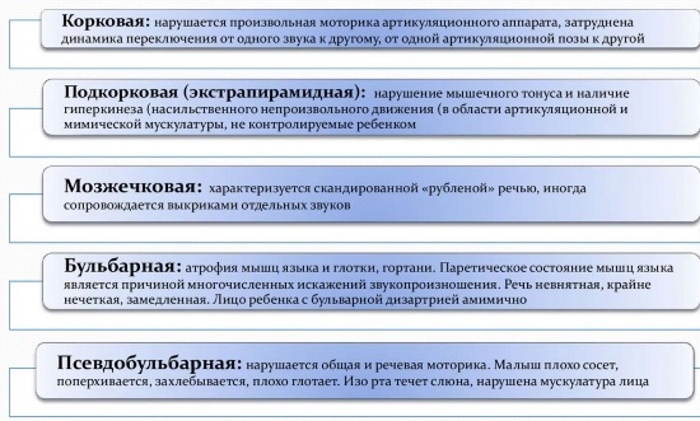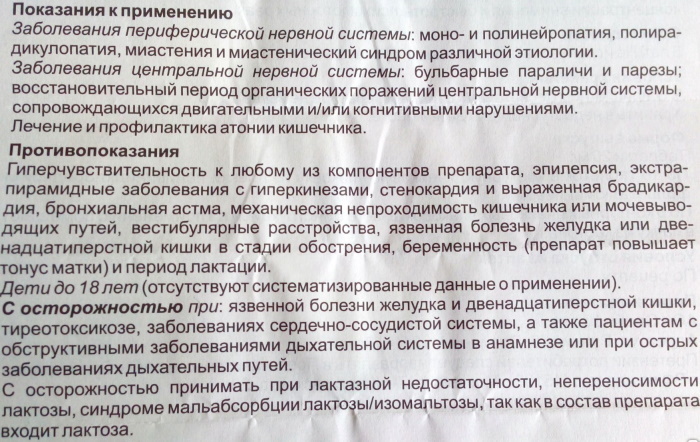The cause of the disease can serve as contact with an infected patient, as well as the subject. Pathogenic bacteria are transmitted through the air, food or household moving. Often the causative pathogen produces lactic acid in foods. As a rule, the disease is seasonal, the aggravation occurs in the fall and winter. There are many cases of the epidemic outbreaks that occur due to disruption of the normalized vaccination or infection of stability in nature.

What it is?
Diphtheria - an acute infectious disease caused by a particular pathogen (infectious Agent) and is characterized by lesions of the upper respiratory tract, skin, cardiovascular and nervous systems. Much more rarely in diphtheria can affect other organs and tissues.
The disease is characterized by a very aggressive course (benign forms are rare), that without timely and adequate treatment can lead to irreversible damage to many organs, to the development of toxic shock and even death of the patient.
The causative agent of diphtheria
The causative agent - Corynebacterium diphtheria (see. photo) This rather large sticks, which are slightly curved shape of the mace. When microscopic examination reveals the characteristic pattern: the bacteria are arranged in pairs at an angle to each other, in the form of the Latin V.
- The genetic material contained in a double stranded DNA molecule. Resistant bacteria in the environment, well-kept freezing. The dried mucus droplets retain their ability to live up to 2 weeks in water and milk up to 20 days. Bacteria susceptible to disinfectants: 10% hydrogen peroxide kills them for 10 minutes, alcohol 60 ° for 1 minute, heating to 60 degrees are killed 10 minutes later. To combat the diphtheria bacillus effective and chlorinated products.
- Infection diphtheria derived from the patient or bacillicarriers having no symptoms of the disease. Bacteria enter the mucous pharynx airborne droplets, with drops of saliva or mucus patient. Can be transmitted through contaminated and household articles and products in close physical contact.
Gateway for infection are pharyngeal mucosa, nasal, genital, conjunctiva, skin damage. Diphtheria bacteria multiply at the site of penetration, which leads to different forms of the disease: diphtheria pharynx, larynx, nose, eyes, and skin. Most often korinobakterii settle on the mucous membrane of the tonsils and soft palate.

development mechanisms
As already indicated above, the agent described pathology enters the body, overcoming the protective barriers of the mucous membranes (oral, eye, gastrointestinal tract). Further, there is an active breeding corynebacteria in the region of the entrance gate.
After that, the pathogenic agent starts to actively produce toxic substances to the body that cause disruption to many organs and tissues. In addition, these toxins cause necrosis of mucosal epithelial cells (necrosis) with subsequent formation of fibrinous film. It is firmly attached to the surrounding tissue in the tonsils, and remove with a spatula is not possible during the examination of the patient. With regard to the more remote parts of the respiratory tract (trachea and bronchi), here it is not so tightly soldered with underlying tissues, which allows it to separate and clog the lumen of the airways, leading to strangulation.
The part of the toxin, which has got into the blood, can cause pronounced swelling of the tissues in the jaw. His degree is an important differential-diagnostic feature that allows to distinguish from other diseases diphtheria.
Statistics
The incidence of diphtheria is caused by socio-economic standard of living and health literacy. In the days before the discovery of vaccination incidence of diphtheria was a clear seasonality (increased sharply winter and decreased significantly during the warmer months), due to the peculiarities of the pathogen infection. Ill predominantly school-age children.
After widespread vaccination of diphtheria seasonal pattern of disease disappeared. Today, in developed countries diphtheria is very rare. According to various studies, the incidence rate ranges from 10 to 20 cases per 100 tysyach per year, and mostly ill adults (men and women may become infected with the same proportion of probabilities). The mortality (death rate) in this pathology varies from 2 to 4%.
Classification
Depending on the place of infection identified a number of forms of diphtheria.
- Localized when symptoms are limited to only a place of introduction of bacteria.
- Common. In this case the plaque beyond the tonsils.
- Toxic diphtheria. One of the most dangerous forms of the disease. It is characterized for rapid, swelling of many tissues.
- Diphtheria of other sites. Such a diagnosis is made, if the entrance gate of infection were the nose, skin, sex organs.
Another type of classification - by type of complications that accompany diphtheria:
- Heart and vascular lesion;
- appearance paralysis;
- nephrotic syndrome.
Non-specific complications - is the accession of a secondary infection of pneumonia, bronchitis or inflammation of other organs.

incubation period
Diphtheria incubation period lasts from 2 to 10 days. The patient develops severe intoxication, fever, increased palatine tonsils, loss of appetite. Patient difficult to swallow, it suffers the weakness and pain in the throat.
symptoms of diphtheria
Symptoms of diphtheria in children and adults include malaise, fever (38 ° C), sore throat. Often diphtheria in its initial stage may be confused with the usual ARD, but after some time (1-2 days) on the tonsils there is a characteristic patina. First, it is whitish and thin, but gradually compacted, becomes gray.
The patient's condition is deteriorating slowly, the voice changes; body temperature increased slightly, runny nose and other symptoms of ARI no.
diphtheria oropharynx
Diphtheria oropharynx is the most common disease in adults and children (90-95%). Onset of the disease resembles acute respiratory infections and proceeds with moderate intoxication: the patient feels unwell, headache, lack of appetite; the skin becomes pale, appears tachycardia, palate and tonsils swollen.
In tonsils appear bright film (fibrous plaque), reminiscent of the web, but with the development of disease (on the second day), plaque sereet compacted; remove the film is quite difficult, as the mucosa may bleed. After 3-5 days of diphtheria film becomes loose, it becomes easy to remove; lymph nodes increased, palpation of the patient having pain.

Off-white film on the soft palate, a classic sign of diphtheria.
diphtheria croup
Diphtheria croup has two forms: diphtheria, laryngeal diphtheria and larynx, trachea and bronchi. The latter form is often diagnosed in adults. Among the symptoms are most pronounced strong, barking cough, voice changes (hoarseness), pallor, shortness of breath, impaired heart, cyanosis.
Pulse patient weakens significantly reduced blood pressure, disturbance of consciousness occur. After the appearance of seizures, a person can die from asphyxia.

diphtheria eye
This form of the disease characterized by a weak discharge, inflammation of the conjunctiva, a slight increase in temperature. The eyelids become swollen, stands sukrovichno-purulent secret.
The skin around the eye is irritated. Symptoms of the disease develops rapidly, it may cause other parts of the eye, the development of diseases: acute purulent inflammation of the tissues and shells eyes, lymphadenitis.

ear diphtheria
Defeat ear in diphtheria rarely is the original form of the disease and are usually developed with the progression of diphtheria pharynx. From the pharynx to the middle ear cavity Corynebacterium can penetrate through the Eustachian tube - coated mucosa Sheath channels which connect the middle ear with the pharynx, it is necessary for the normal functioning of the auditory apparatus.
Propagation corynebacteria and their toxins in the tympanic cavity may lead to suppurative inflammatory process, perforation of the tympanic membrane and the hearing. Clinically ear diphtheria can be manifested by pain and easing of hearing on the affected side, and sometimes patients may complain of tinnitus. A break of the eardrum of the external auditory meatus allocated purulent bloody mass and during examination can reveal a grayish-brown film.

diphtheria of the nose
nasal diphtheria is accompanied by a slight intoxication. Breathing is difficult, pus or ichor. Observed edema of the nasal mucosa, the emergence of ulcers, erosions, films. Often the disease is accompanied by damage to eyes, larynx, oropharynx.

Diphtheria of the skin and genital organs
Through normal intact skin Corynebacterium diphtheria do not penetrate. The place of their introduction can be wound, scratches, cracks, sores or ulcers, decubitus and other pathological processes related to the protective functions of the skin breach. Developing at the same time the symptoms are local and systemic effects are extremely rare.
The main manifestation of diphtheria skin is the formation of dense fibrin grayish film that covers the wound surface. She is separated with difficulty, and after removal of quickly restored. The skin around the wound with the swollen and painful to touch.
Mucous membranes of the external genitalia can be observed in girls or women. The surface of the mucous membrane at the site of the introduction of Corynebacterium inflamed, swells and becomes sharply painful. Over time, in place of edema can be formed ulcerative defect which is covered by a dense, gray, a detachable hard coating.

complications
Severe forms of diphtheria (toxic and hypertoxic) often lead to complications that are associated with the defeat:
1) Kidney (nephrotic syndrome) - is not a dangerous condition, which can be determined only by urine analysis and blood biochemistry. With him there is no other symptoms, which worsen the patient's condition. Nephrotic syndrome disappears completely to the top of recovery;
2) Nerves - a typical complication of toxic form of diphtheria. It can manifest itself in two variants:
- Full / partial paralysis of cranial nerves - the child is difficult to swallow solid food, he "poperhivaetsya" liquid food can divide in two eyes or eyelids lowered;
- Polyradiculoneuropathy - this condition is manifested decrease the sensitivity of the hands and feet (type "gloves and socks"), partial paralysis of the arms and legs.
Symptoms of nerve damage are usually completely disappear within 3 months;
- Heart (myocarditis) - a very dangerous condition, the severity of which depends on the time of the first signs of myocarditis. If there are problems with the heartbeat in the first week - has developed rapidly OCH (acute heart failure), which can lead to death. The occurrence of symptoms after the 2nd week of a favorable prognosis, since it is possible to achieve full recovery of the patient.
Among other complications can be noted anemia (anemia) in patients with hemorrhagic diphtheria. She rarely manifests symptoms, but can easily be determined by a general analysis of blood (reduced hemoglobin and erythrocytes).
Diagnostics
Symptoms of diphtheria in children are similar to those that occur in adults. However, even knowing them, to understand what the kid was struck just the disease, it is not always possible without the advanced diagnostics.
Therefore, if a pediatrician there is even the slightest doubt, as a rule, he appoints a small patient following tests:
- Microscopy (when studied under a microscope smear taken from the problem areas) - a procedure aimed at identifying Corynebacterium diphteriae (specific bacteria having defined shape).
- Serology involving ELISA, PHA and similar methods - analysis helps detect the presence of specific antibodies in the serum.
- Complete blood analysis - standard examination, which allows to determine the fact of an acute inflammatory process itself.
- Qualification titer (level) antitoxic antibodies. If the result exceeds the rate of 0.05 IU / mL, diphtheria can be safely excluded.
- Bakposev taken of biological material - bacteriological examination, which allows to determine not Only the presence of bacteria in the body, but also their resistance to antibiotics of different types and scope infection.
Diphtheria in children diagnosed with no problems, when found during the inspection of the film on the affected area, whistling noises in the throat and hacking cough and the other characteristic signs of the disease. However, if at the moment the disease is mild, can not do without the help of the above-described assays in its detection.
How to treat diphtheria?
Effetvinoe treatment of diphtheria in children and adults is carried out only in a hospital environment (hospital). Hospitalization is required for all patients as well as patients with suspected diphtheria bacteria carriers.
Central to the treatment of all forms of diphtheria (except of bacteria), is the introduction of antitoxic diphtheria serum (PDS), which suppresses the diphtheria toxin. Antibiotics have no significant effect on the causative agent of diphtheria. The dose of diphtheria serum determined by the severity of the disease. For suspected localized form can delay the administration of the serum prior to diagnosis. If the doctor suspects a toxic form of diphtheria, treatment serum should be initiated immediately. Serum is administered intramuscularly or intravenously (if heavy forms).
In diphtheria oropharynx also shown gargling disinfectants (oktenisept). Antibiotics may be prescribed to suppress co-infection, a course of 5-7 days. In order to detoxify administered intravenous drip solutions: reopoligljukin, albumin, plasma glucose-potassium mixture polyionic solutions of ascorbic acid. prednisolone violations can be used for swallowing. When toxic form gives a positive effect plasmapheresis followed by displacement cryogenic plasma.

Prevention of diphtheria
Nonspecific prevention involves hospitalization of patients and carriers of diphtheria bacilli. Recovered prior to admission into the team examined once.
In the hearth of contact patients mednablyudenie set for 7-10 days with daily clinical examination by a single bacteriological examination. Their immunization conducted on epidemic indications and after determining the intensity of immunity (via serological method presented above).
Vaccination against diphtheria
Vaccination against diphtheria toxoid is conducted, that is inactivated toxin. Upon introduction into the body does not produce antibodies to Corynebacterium diphteriae, and to diphtheria toxin.
Diphtheria toxoid, is a member of DTP vaccines combined domestic (associated, it is a complex, pertussis vaccine, diphtheria and tetanus) DTaP (acellular pertussis vaccine component) and DT (diphtheria-tetanus toxoid), and "benign" Td vaccines and BP-M. In addition, Russia registered a vaccine «SanofiPasteur» Company: Tetrakok (diphtheria, tetanus, pertussis, polio) and tetrakis (diphtheria, tetanus, pertussis, polio, with acellular pertussis component); DT Wachs (diphtheria-tetanus toxoid vaccination for children under 6 years) and DT Imovaks Adyult (diphtheria-tetanus toxoid vaccination for children over 6 years and adults), as well as Pentaxim (vaccine against diphtheria, tetanus, pertussis, polio and Haemophilus influenzae with acellular pertussis component).
According to the Russian calendar of vaccination, vaccination of children under one year is held in 3, 4-5 and 6 months. The first revaccination is carried out in 18 months, the second - in 7 years, the third - in 14. Adults need to be revaccinated against tetanus and diphtheria every 10 years.

Vaccination has side effects?
Numerous studies have proved the possibility of only 4 side effects:
- Fever (37-38 ° C);
- Weakness;
- Redness at the injection site;
- The appearance of a small swelling (after injection).
Do I need to re-vaccinated adults?
WHO does not see the need. However, if you intend to in the near future contact with the patient - see your doctor. He will prescribe a test for the detection of antibodies to the toxin corynebacteria in your blood. If they are not enough - it is recommended to put the DSA once.



